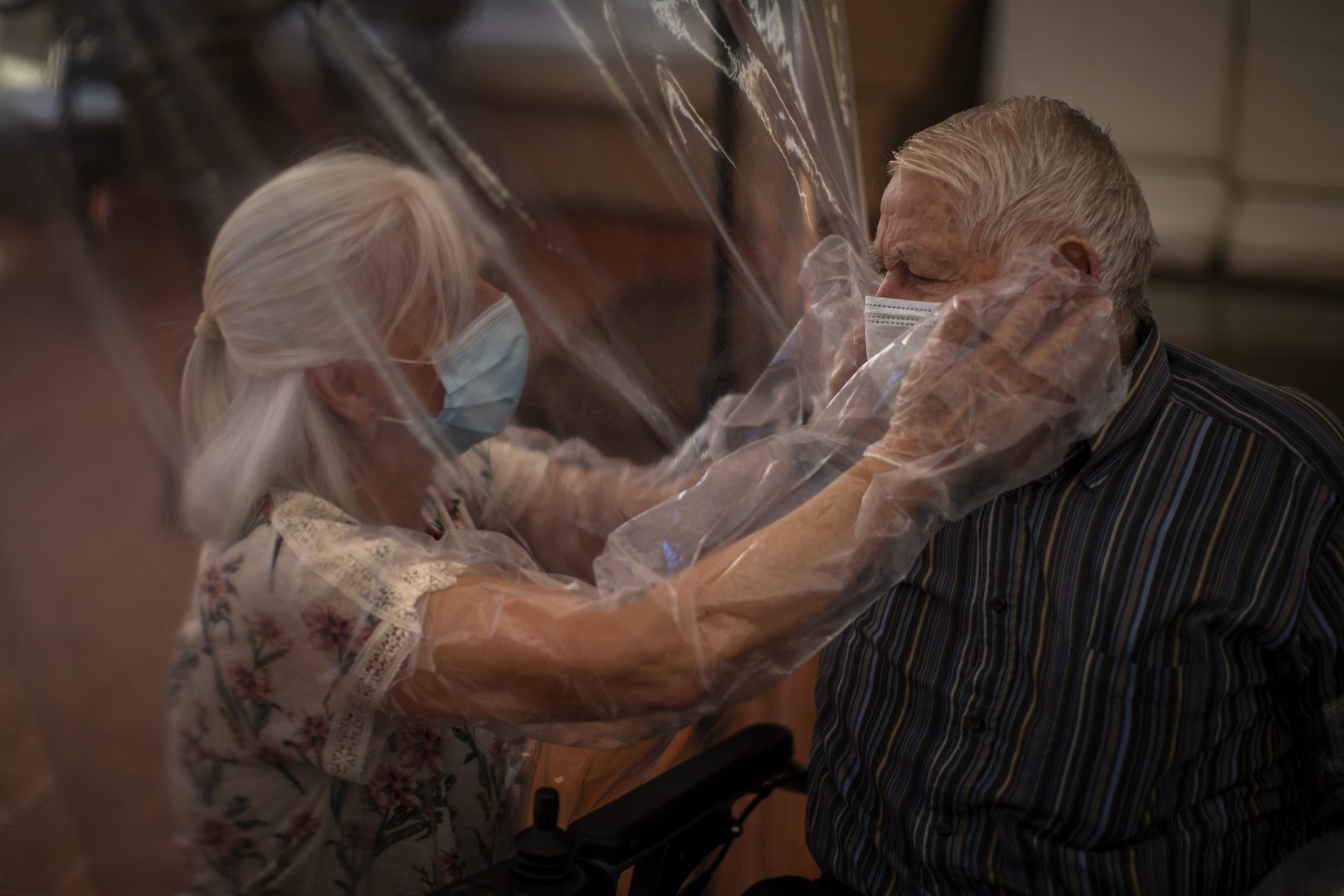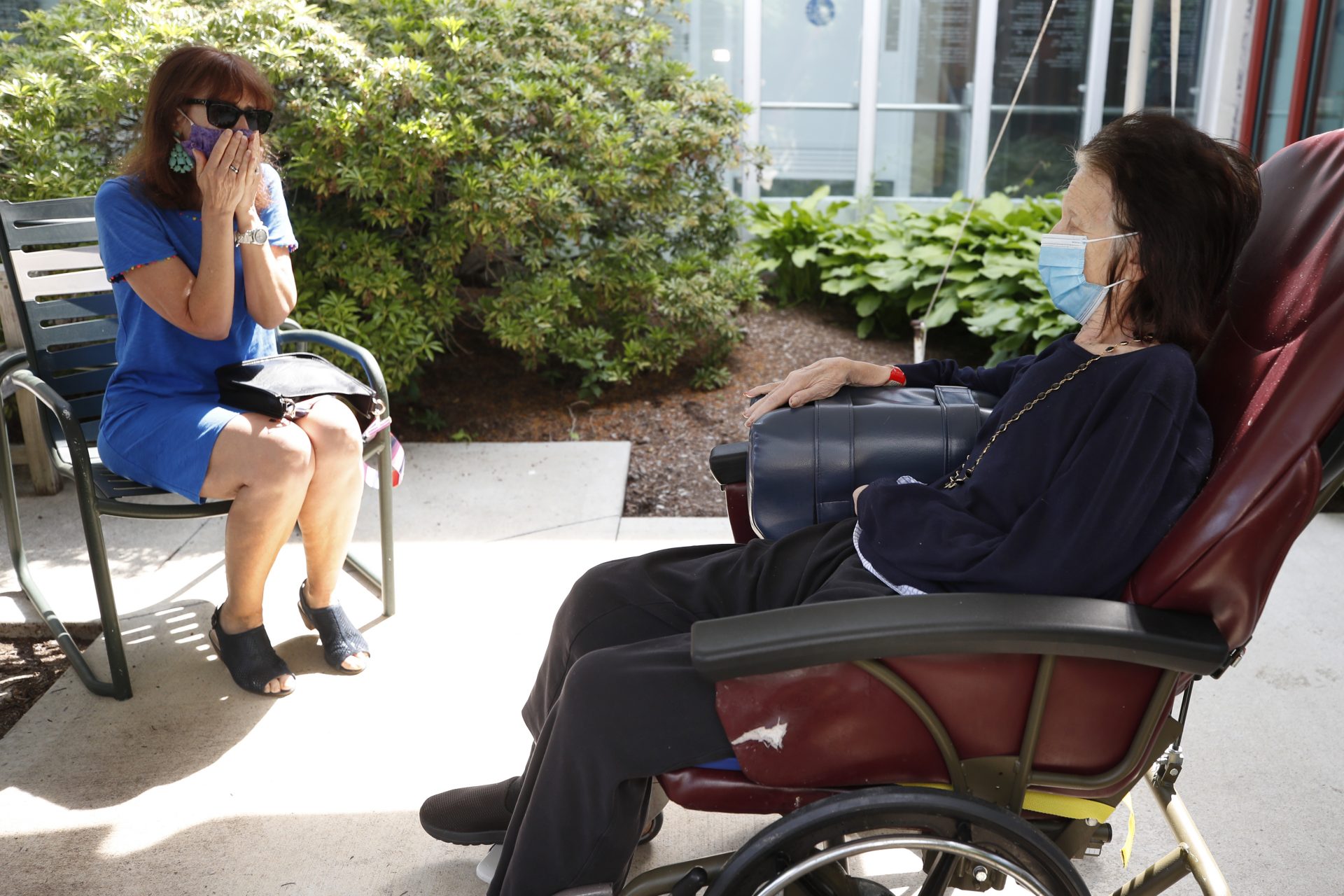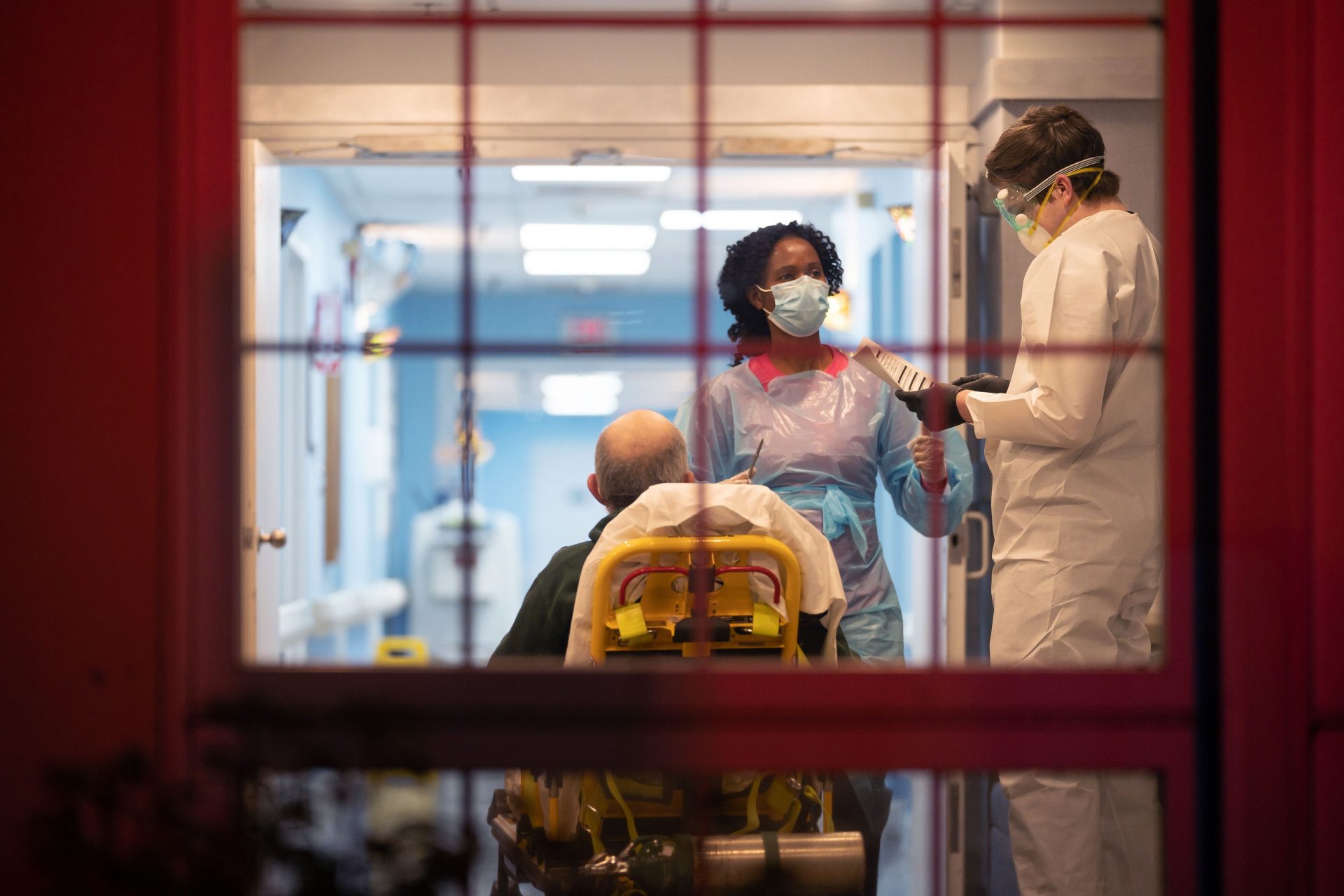
In this Monday, June 22, 2020 photo, Dolores Reyes Fernández, 61, touches the face of her father José Reyes Lozano, 87, for the first time in nearly four months as visits resume to a nursing home in Barcelona, Spain.
Emilio Morenatti / AP Photo

In this Monday, June 22, 2020 photo, Dolores Reyes Fernández, 61, touches the face of her father José Reyes Lozano, 87, for the first time in nearly four months as visits resume to a nursing home in Barcelona, Spain.
Emilio Morenatti / AP Photo

Emilio Morenatti / AP Photo
In this Monday, June 22, 2020 photo, Dolores Reyes Fernández, 61, touches the face of her father José Reyes Lozano, 87, for the first time in nearly four months as visits resume to a nursing home in Barcelona, Spain.
(Washington) — The Trump administration was slow to comprehend the scale of COVID-19’s impact on nursing homes and a disjointed federal response has only compounded the devastating toll, according to a report from Senate Democrats.
The report due out Wednesday, a copy of which was provided to The Associated Press, finds a lack of coordination among government agencies hindered access to coronavirus testing and protective equipment, among other problems.
“Unfortunately for the nation, it is a chronicle of deadly delay, and a lack of urgency, and the lack of a strategy,” said Sen. Bob Casey of Pennsylvania, ranking Democrat on the Aging Committee. “What we see in the way the administration handled this reflects the administration’s failure in responding to the pandemic generally.”
Sens. Ron Wyden, D-Ore., and Gary Peters, D-Mich., joined in the report.

Elise Amendola / AP Photo
Marcie Abramson, left, becomes emotional as she speaks to her mother, Cynthia, outdoors at the Hebrew Rehabilitation Center, Wednesday June 10, 2020, in Boston, under the state’s new nursing home visitation guidelines which requires social distancing. The two haven’t been able to visit in person since March.
The head of the Centers for Medicare and Medicaid Services, the lead federal agency on nursing homes, defended the administration’s record. “The report is disingenuous,” said Seema Verma. “I think the agency has had a historic and unprecedented response and should be commended for its efforts.” Verma cited numerous agency alerts and guidance documents directed to nursing homes. CMS also says it has redoubled emphasis on inspections for infection control.
Investigative agencies like the Government Accountability Office and the Health and Human Services inspector general are also focusing on nursing homes, which house a tiny share of the population but represent a large proportion of COVID deaths. The issue could have political repercussions for President Donald Trump as he tries to persuade older Americans to back him for a second term.
Even now, four months after the first nursing home outbreak was reported in Kirkland, Washington, on Feb. 29, there’s no consensus estimate of the extent of suffering and death.
Statistics reported by nursing homes to the federal government as of June 14 show nearly 30,800 residents have died, according to an AP analysis.
Several news organizations have reported higher numbers. An AP count that includes nursing homes and other long-term care facilities finds nearly 52,500 deaths, combining residents and staff. Either way, that’s a disproportionate share of the total 127,000 deaths nationwide.
The report, prepared by Democratic Senate staff, found that:
— It took the administration several months — until early May — to require that nursing homes report data on coronavirus cases and deaths to the Centers for Disease Control and Prevention and CMS. The data remains incomplete, the report says, because it lacks demographic details and may not include cases early in the pandemic. Verma said such data collection efforts can take years to set up, and that CMS may well ask for demographic details.

JESSICA GRIFFIN / Philadelphia Inquirer
As of Tuesday, Pennsylvania reported 12,130 cases of COVID-19 inside 540 long-term care facilities. More than 2,600 residents have died.
— Urgent recommendations from the White House and guidance from CMS to test nursing home residents and staff did not translate to results on the ground because there was no system in place to guarantee the availability of tests and supplies. Verma said CMS tried to help by changing its rules to allow labs to go into nursing homes and collect samples.
— A FEMA initiative launched at the end of April to distribute supplies to nursing homes involved unnecessary delays, delivered faulty and unusable personal protective equipment to some locations, and initially left other facilities off the distribution list though they appeared to be eligible.
— Although Congress allocated $175 billion in emergency funding for health care facilities and service providers, nursing homes appear to have gotten a relatively small share, delivered in recent weeks. An initial $4.9 billion was provided in late May, and more money was sent out this month, in a distribution geared to facilities serving Medicaid patients.
The report largely avoids criticism of the nursing home industry, which has been cited for poor infection control practices and chronic staffing shortages. Staff members often work at multiple facilities and may have unwittingly contributed to spreading the virus, since people can be contagious without any noticeable symptoms. Once inside a nursing home, the coronavirus encounters an ideal environment in which to spread.
Defending the administration, Republican lawmakers suggest at least part of the blame lies with several Democratic governors who required nursing homes in their states to accept recovering coronavirus patients.
CMS has impaneled a 25-member commission to analyze what happened in nursing homes and make recommendations to better protect elderly and frail residents.
The report from Senate Democrats also includes some recommendations, among them promoting strategies that have worked to allow nursing homes to safely care for coronavirus patients, accelerating the ongoing shift to home- and community-based care, and raising the pay and status of nursing home staff.
“I’m not saying that government can wave a magic wand and eliminate the threat, because the context of a nursing home is challenging,” Casey said. But “there’s no excuse for having this many deaths under any circumstances.”

Sometimes, your mornings are just too busy to catch the news beyond a headline or two. Don’t worry. The Morning Agenda has got your back. Each weekday morning, host Tim Lambert will keep you informed, amused, enlightened and up-to-date on what’s happening in central Pennsylvania and the rest of this great commonwealth.
The days of journalism’s one-way street of simply producing stories for the public have long been over. Now, it’s time to find better ways to interact with you and ensure we meet your high standards of what a credible media organization should be.